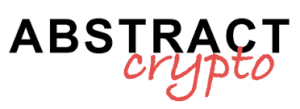The evolution of the financial ecosystem based on Bitcoin, known as BTCfi, which aims to create a decentralized (DeFi) infrastructure, scalable and interoperable to support a wide range of on-chain applications.
What is BTCfi? How is the Bitcoin-based DeFi ecosystem divided?
BTCfi is conceived as a “second level” for Bitcoin, offering not only a more efficient payment system, but also a network of networks that includes decentralized exchanges, lending protocols, derivatives markets, and more.
The latest report from the company divides the BTCfi ecosystem into three main categories: the scaling chains for Bitcoin, the bridged versions of the Bitcoin asset usable on these chains, and the key decentralized applications focused on Bitcoin.
1. Catene di Scalabilità di Bitcoin
The “Bitcoin Scaling Chains” represent solutions that operate as layer 2, sidechain, or other strategies to improve the scalability and usability of Bitcoin. Among the main ones mentioned in the report are:
- Lightning Network: A second-layer payment protocol that allows fast and economical transactions using payment channels that do not require the inclusion of every transaction in the main blockchain.
- Liquid Network: A Bitcoin sidechain created by Blockstream that offers faster settlement and privacy, primarily used by financial institutions and traders.
- Core Blockchain: An infrastructure that combines the Nakamoto consensus of Bitcoin with a consensus model called Satoshi Plus, which expands the capabilities of Bitcoin miners to ensure a smart contract platform.
2. The Bitcoin Asset (Bitcoin Asset)
The report also examines the bridged versions of Bitcoin that can be used on these scaling chains. These versions include:
- coreBTC: A bridged version of Bitcoin usable on the Core blockchain, created through a decentralized system involving “Lockers”, liquidators, and slashers to ensure a trust-minimized approach.
- L-BTC: The native asset of the Liquid Network, pegged 1:1 to Bitcoin and used for faster and more private transactions.
- RBTC: The native asset of RSK, which allows users to use Bitcoin on the blockchain RSK with a 1:1 peg.
3. Key BTCfi Dapps
Finally, the report explores various decentralized applications (dapps) designed to expand the use of Bitcoin, especially through bridged solutions on scaling chains. Some of these dapps include:
- ALEX: A DeFi platform on Stacks that offers financial tools such as yield farming, loans, and decentralized exchanges.
- Sovryn: A protocol on RSK that allows trading, lending, and margins with Bitcoin, maintaining full control of the assets.
- Bitflow Finance: A DEX on Stacks that allows users to trade, lend, and earn using Bitcoin without centralized intermediaries.
Conclusion
The report concludes that BTCfi represents a significant step forward towards the expansion of Bitcoin’s capabilities, offering a range of solutions that enhance its scalability and interoperability.
Although many of these technologies are still in the development phase, the potential to create a robust and decentralized financial infrastructure is evident. However, the report emphasizes the importance of further research and consultations with experts to fully understand the complexities and implications of these solutions.
BTCfi promises to align with the principles of Bitcoin, maintaining its resilience and decentralization, while expanding its use well beyond simple payment transactions.


